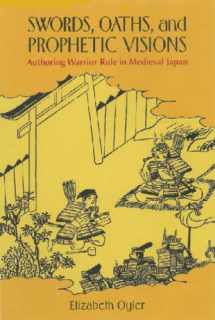
Swords, Oaths, And Prophetic Visions: Authoring Warrior Rule in Medieval Japan
Book details
Summary
Description
Oyler considers tellings and retellings of key episodes in the history of the Minamoto clan: the prophetic dream telling of Yoritomo’s rise to power; the emergence of Kiso Yoshinaka as a challenger to his cousin, Yoritomo; the falling out between Yoritomo and Yoshitsune; and the recovery of the swords used by the Soga brothers to enact their revenge. Her study reveals how the narrative tradition regarding such episodes is conditioned by deeper and more profoundly difficult historical moments, including the culturally traumatic loss of one of the three sacred regalia and the attenuation of royal authority resulting from the creation of Minamoto Yoritomo’s Kamakura government. She asks: How were the ideas of unity and loyalty, so central in medieval conceptualizations of warrior clans, shaped for use by a fractious ruling family? What methods did medieval readers and audiences rely on to interpret these tales? Oyler shows how authors and audiences shaped their histories in terms of their own cultural identities and anxieties. Her re-envisioning of the rise of the Minamoto victors provides a nuanced understanding of the narrative and historical impulses that helped shape medieval ideas about the war and the warriors who rose to power in its wake.
By examining the treatment of the Genpei War across a broad selection of texts and genres, Swords, Oaths, and Prophetic Visions complicates some of the fundamental characterizations of the medieval period and the nature of medieval literature, particularly polarizations between so-called high art and popular stories, and oral versus written literature. It contextualizes the stories that underwrite emerging ideas of cultural identity and a shared sense of history in medieval Japan in new and provocative ways.


We would LOVE it if you could help us and other readers by reviewing the book
Book review



